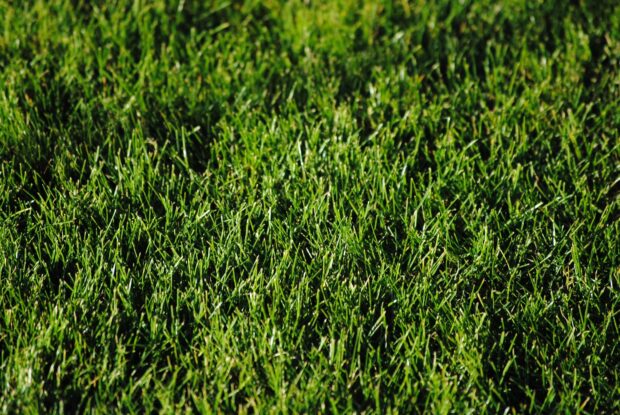
Anyone who has done a little bit of research into lawn maintenance will have doubtless come across information on the practice of scarifying. This term generally refers to using a machine to remove thatch from the surface of a lawn to help improve overall health and lead to a thicker and more aesthetically pleasing appearance, and we’ve put together a guide to the causes and a step-by-step guide on how to scarify a lawn correctly.
In many gardens the lawn covers the largest area, so beautiful flower beds or stunning patio/decking areas will seldom make up for a poorly maintained lawn. A well-kept, lush green lawn really is the (often) unsung hero of the domestic garden. So, what is exactly is thatch?
The first thing to say is that despite the often commonly made claims about the causes of thatch on the surface of a lawn, it does not consist of small blades of grass which fall onto the lawn during mowing.
Thatch is actually a layer of mostly dead material which naturally occurs with many (not all) types of lawn grass. The material mostly consists of stems, stolons, rhizomes, and roots that have not yet broken down and sit on the surface of the soil between the live grass stems. The right amount of thatch is far from a being a bad thing as it provides some protection from temperature or moisture fluctuations and is a naturally occurring part of the life cycle of many types of turf grass. If new grass is growing at roughly the same rate as old decaying material is naturally broken down, then no thatch, or a desirable thin layer will be present, and this is a good thing!!
The problem comes when the thatch is building up faster than it is being naturally broken down and becomes noticeably thick and spongy underfoot. A thick layer of this decaying material will encourage the build up of moss, prevent moisture getting to the roots of the lawn and even encourage certain types of diseases.
How Often to Scarify a lawn…
Scarifying will generally only need to be undertaken once a year in most cases, but sometimes twice. Bear in mind that excessive scarifying can take its toll on the grass so if you think you have a more serious issue, it might be worth considering speaking to a professional lawn company to seek advice, although in most normal cases a ‘do-it-yourself’ approach is not to be discouraged.
Scarifying can be done during either spring or early autumn when the grass is growing well and the soil is moist. However we would suggest that autumn is by far the better time to do it. If you do opt to scarify in spring, it’s better to just rake or scarify very lightly as the last thing you want to do is leave too much exposed soil with lots of seedling weeds around.
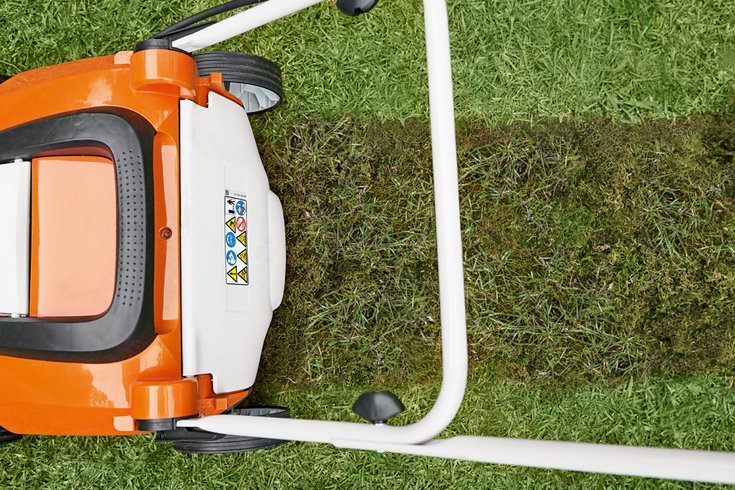
Do I cut the Grass before Scarifying?
Yes, absolutely! We have a step by step process detailed further down the page. Once it’s been identified that thatch has become an issue (there are steps that can be taken to prevent or minimise thatch build up before it becomes an issue, but that’s a whole separate topic we won’t go into here) the best and it’s probably fair to say – the only – effective solution is to now scarify the lawn.
As you would likely expect, there are many different scarifiers available on the market, so it’s worth doing a little research and checking product reviews etc before making a purchase (Link at the bottom of this article to the range we stock).
Do I rake or Scarify First?
The answer is both!! Follow our step-by-step guide below. You’ll want to kill moss, mow and rake away before scarifying and then rake away any bedris afterwards. The process of scarifying the lawn involves sharp metal blades being used to cut into the aforementioned decaying material, loosening and separating the tight matt of thatch, thus allowing it to be removed easily using a spring-tine rake (or similar). This is usually a petrol/battery powered or electric machine, but there are cheaper manual scarifiers available which may be suitable for very small lawns.
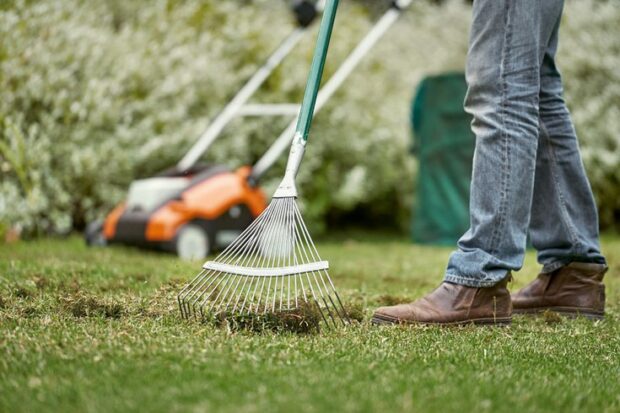
Scarify the Lawn – Step-by-Step
In order for this task to be done effectively, you can use the following steps as a guide.
- Check the lawn for moss – this should be done weeks in advance as the last thing you want to do is rip through moss with a bladed machine and spread spores all over the lawn! Use moss-killer as directed by the manufacturer and ensure moss is dead and removed before scarifying.
- Cut the grass before scarifying using a low height setting on your lawn mower.
- Rake away any debris etc that may be present.
- Scarify the lawn using a fairly high setting on the machine -at least to begin with. Cutting too deep into the soil can be detrimental, and the idea is not to churn up and cut your lawn to pieces. (We have have seen/heard of this being done, please proceed with caution if you’ve never done this before).
- Rake away and dispose of removed thatch material.
- Now some top soil/lawn dressing and grass seed can be applied to help replenish the lawn.
-
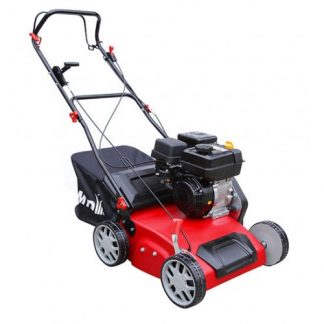 LAWNFLITE MTD Optima O35VO Petrol Scarifier£406.08 inc. VAT. (£338.40 ex. VAT.)
LAWNFLITE MTD Optima O35VO Petrol Scarifier£406.08 inc. VAT. (£338.40 ex. VAT.) -
Product on sale
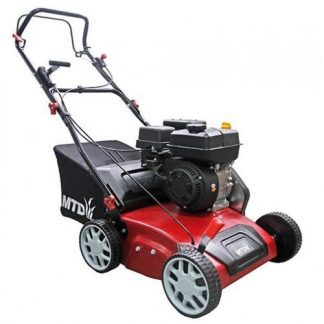 LAWNFLITE Optima O38VO petrol scarifierFrom £446.00 inc. VAT. (£371.67 ex. VAT.)
LAWNFLITE Optima O38VO petrol scarifierFrom £446.00 inc. VAT. (£371.67 ex. VAT.) -
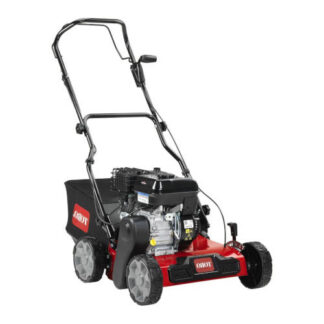 TORO Petrol Scarifier – 54610£639.00 inc. VAT. (£532.50 ex. VAT.)
TORO Petrol Scarifier – 54610£639.00 inc. VAT. (£532.50 ex. VAT.) -
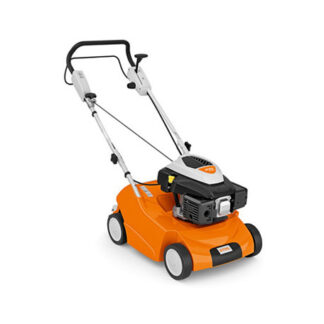 STIHL RL540 Petrol Scarifier£643.50 inc. VAT. (£536.25 ex. VAT.)
STIHL RL540 Petrol Scarifier£643.50 inc. VAT. (£536.25 ex. VAT.)

